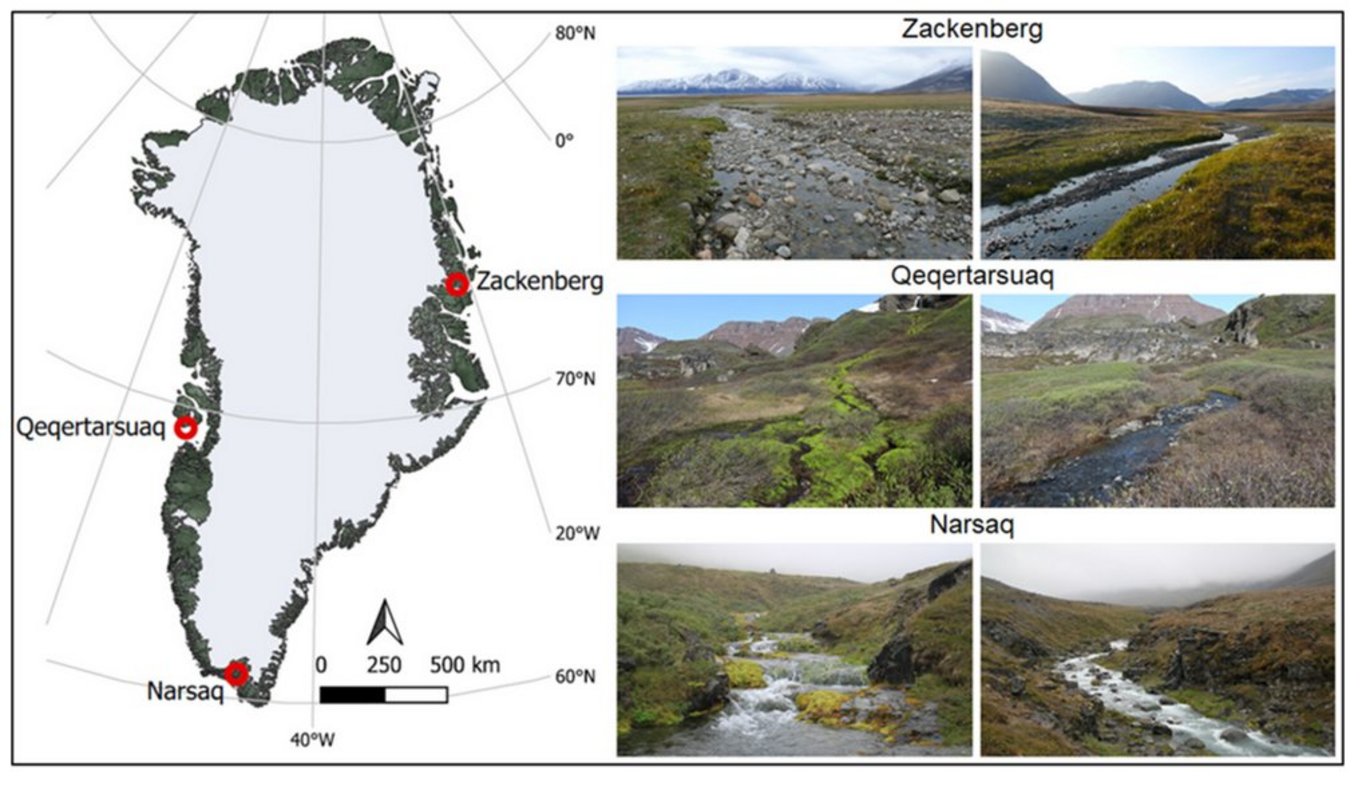Drivers of Epilithic Biofilms in Greenland Streams: The Role of Nutrients, Temperature and Catchment Slope Across a Climate Gradient
New publication by Sanne M. Moedt, Kirsten S. Christoffersen, Andreas Westergaard-Nielsen, Kenneth T. Martinsen, Ada Pastor, Niels Jákup Korsgaard, Tenna Riis

Abstract:
The Arctic is warming faster than the global average, making it critical to understand how this affects ecological structure and function in streams, which are key Arctic ecosystems. Microbial biofilms are crucial for primary production and decomposition in Arctic streams and support higher trophic levels. However, comprehensive studies across Arctic regions, and in particular within Greenland, are scarce. This study analysed total biomass, autotrophic biomass (chlorophyll a), and the general structure of major autotrophic groups in stream epilithic biofilms across Greenland's subarctic, Low Arctic, and High Arctic regions. Our aim was to identify primary environmental drivers of biofilm across these climate regions. We observed large environmental variation differences in biofilm chlorophyll a concentrations and total biomass across the regions. Cyanobacteria, diatoms, and green algae were present in all regions, with cyanobacteria dominating High Arctic streams. Phosphate and water temperature primarily drove autotrophic biofilm abundance measured as chlorophyll a concentration, while catchment slope and nitrate concentrations influenced total biofilm biomass, with relationships varying by region. Our results suggest increased biofilm accumulation in Greenland streams under projected climate warming, which likely will alter trophic food webs and biogeochemical cycling, with region-specific responses expected.
